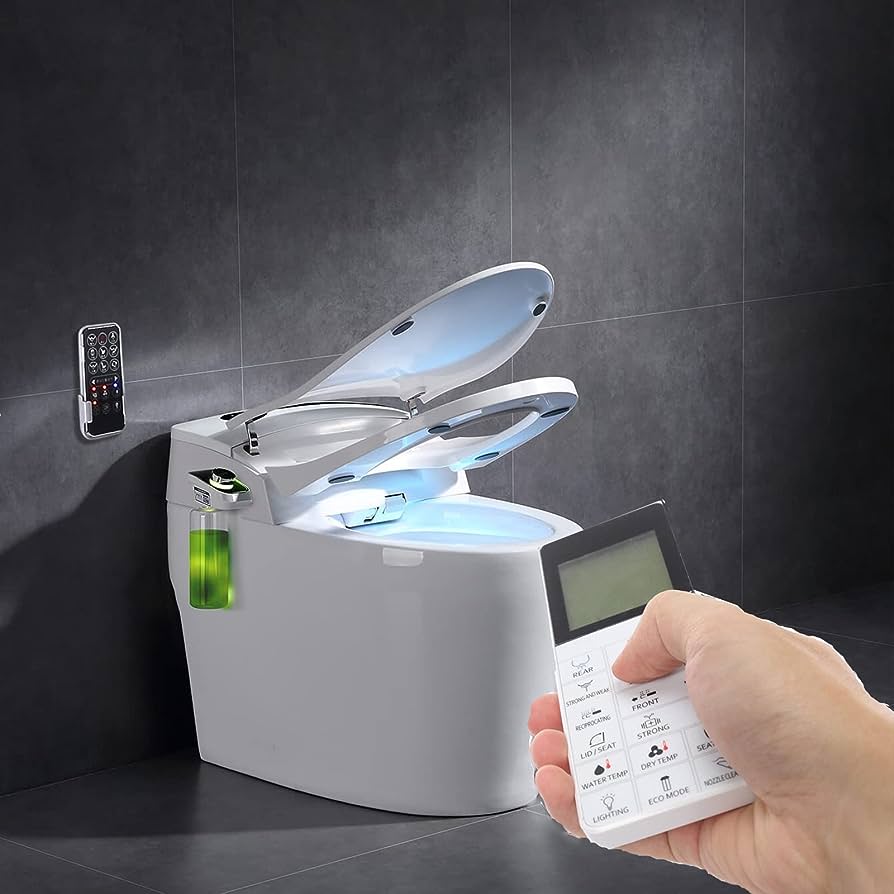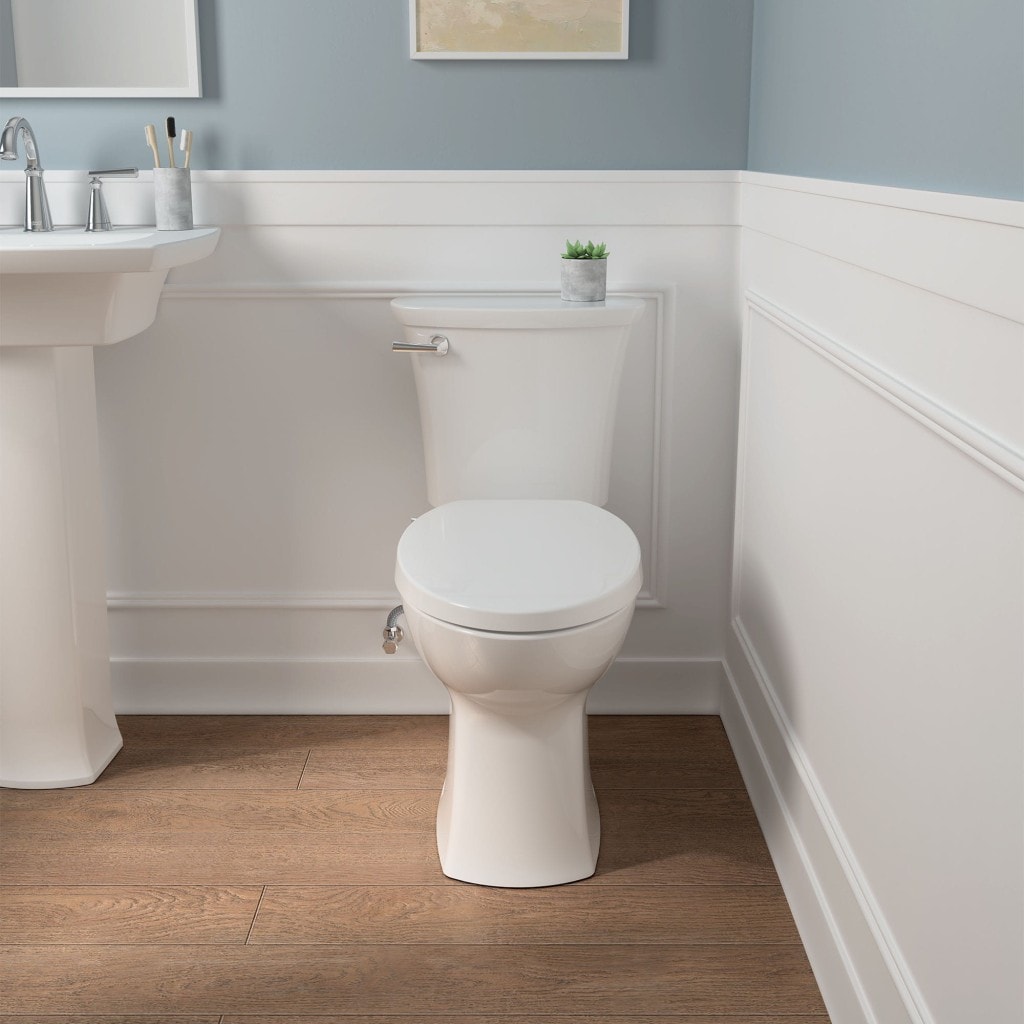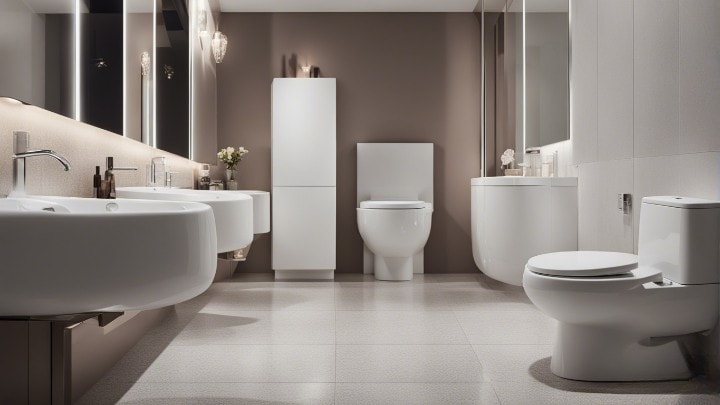Feeling stuck about bidets?
Yeah, it’s confusing.
Electric and non-electric ones, both have their pros and cons, and it’s hard to choose, right? (I’ve been there). But hey, don’t sweat it!
We’ll untangle this knot together.
Picture this as a friendly chat over lunch.
No salesy stuff, no complicated jargon – just facts, benefits, drawbacks, and some giggles along the way.
Ready?
Because you’re about to become a bidet whizz!
And…let’s roll!
Table of Contents
Types of Bidets
In this section, we will discuss the two main types of bidets: electric and non-electric bidets.
Each type has its own set of features, advantages, and disadvantages, which we will explore in detail.
Electric Bidets

Electric bidets are known for their advanced features and customizable options.
They require a power source to operate and often come with a variety of functions, such as seat warming, water warming, adjustable nozzles, and remote control[1]. These bidets are typically more expensive than non-electric models, but they offer a higher level of comfort, convenience, and hygiene.
Some of the key features of electric bidets include:
- Warm water supply for a more comfortable experience
- Adjustable water pressure and nozzle positions for personalized cleaning
- Seat warming for added comfort, especially during colder months
- Remote control for easy operation and customization
- Energy consumption, which can be a concern for environmentally conscious users
Non-Electric Bidets

Non-electric bidets, on the other hand, do not require a power source and are generally more budget-friendly.
They are simpler in design and functionality compared to electric models, but they still provide an effective and hygienic cleaning experience.
Non-electric bidets are often easier to install and maintain, making them a popular choice for those who prioritize simplicity and affordability.
Some of the key features of non-electric bidets include:
- Cold water supply, which may be less comfortable for some users
- Limited nozzle adjustments and water pressure options compared to electric models
- No seat warming or remote control features
- Lower initial cost and operating expenses
- Easier installation and maintenance
Electric bidets offer more advanced features and customization options, while non-electric bidets provide a simpler, more affordable alternative.
Consider the pros and cons of each type to determine which one best suits your needs and preferences.
Installation and Setup
When comparing the installation and setup process for electric and non-electric bidets, there are some key differences to consider.
Electric Bidet Installation
Electric bidets require a power source to operate their advanced features, such as seat warming, water warming, adjustable nozzles, and remote control.
- To install an electric bidet, you will need to:
- Turn off the water supply to your toilet.
- Remove the existing toilet seat.
- Attach the bidet seat mounting bracket to the toilet bowl.
- Connect the bidet seat to the mounting bracket.
- Connect the water supply hose to the bidet seat and the water supply valve.
- Plug the bidet seat into an electrical outlet (ensure it is a GFCI outlet for safety).
Keep in mind that some electric bidets may require a dedicated electrical circuit or a nearby electrical outlet.
If you don’t have an outlet close to your toilet, you may need to hire an electrician to install one.
Non-Electric Bidet Installation
Non-electric bidets are generally easier to install and maintain, as they do not require a power source.
To install a non-electric bidet, follow these steps:
- Turn off the water supply to your toilet.
- Remove the existing toilet seat.
- Attach the bidet attachment or seat to the toilet bowl.
- Connect the water supply hose to the bidet attachment or seat and the water supply valve.
Non-electric bidets typically use cold water, but some models may offer the option to connect to a hot water source for added comfort.
Electric bidets need a power source and may require additional electrical work, while non-electric bidets are simpler to install and do not require electricity.
Features and Functions
Electric Bidet Features
Electric bidets are known for their advanced features and customizable options.
Some of the key features of electric bidets include:
- Warm water supply for a more comfortable experience
- Adjustable water pressure and nozzle positions for personalized cleaning
- Seat warming for added comfort, especially during colder months
- Remote control for easy operation and customization
- Energy consumption, which can be a concern for environmentally conscious users
Non-Electric Bidet Features
Non-electric bidets, on the other hand, do not require a power source and are generally more budget-friendly.
They are simpler in design and functionality compared to electric models but still provide an effective and hygienic cleaning experience.
Some of the key features of non-electric bidets include:
- Cold water supply, which may be less comfortable for some users
- Limited nozzle adjustments and water pressure options compared to electric models
- No seat warming or remote control features
- Lower initial cost and operating expenses
- Easier installation and maintenance
Cost and Maintenance
When comparing electric and non-electric bidets, it’s essential to consider the differences in cost and maintenance.
Initial Cost
Electric bidets are generally more expensive than non-electric bidets due to their advanced features and customizable options.
Non-electric bidets, on the other hand, are more budget-friendly and offer a simpler design and functionality.
Operating Cost
Electric bidets consume energy to power their features, such as seat warming, water warming, and remote control.
This energy consumption can lead to higher operating costs compared to non-electric bidets, which do not require electricity to function.
Maintenance and Repairs
Electric bidets may require more maintenance and repairs due to their complex features and electrical components. Non-electric bidets, with their simpler design, are generally easier to maintain and less prone to malfunctions.
So, electric bidets tend to have higher initial and operating costs, as well as potentially more maintenance and repairs.
Non-electric bidets are more affordable and easier to maintain but may lack some of the advanced features and customization options found in electric models.
When choosing between electric and non-electric bidets, consider your budget, preferences, and the level of maintenance you are willing to commit to.
Pros and Cons of Electric and Non-Electric Bidets
Electric Bidet Pros
- Warm water supply for a more comfortable experience
- Adjustable water pressure and nozzle positions for personalized cleaning
- Seat warming for added comfort, especially during colder months
- Remote control for easy operation and customization
- Advanced features and customizable options
Electric Bidet Cons
- Higher initial cost
- Energy consumption, which can be a concern for environmentally conscious users
- May require a dedicated electrical circuit or a nearby electrical outlet
- More complex installation process
- Potentially more maintenance and repairs due to complex features and electrical components
Non-Electric Bidet Pros
- Cold water supply, which may be less comfortable for some users
- Limited nozzle adjustments and water pressure options compared to electric models
- No seat warming or remote control features
- Lower initial cost and operating expenses
- Easier installation and maintenance
Non-Electric Bidet Cons
- Simpler design and functionality, lacking some advanced features
- May not offer the same level of comfort and customization as electric models
- Limited to cold water supply, unless connected to a hot water source
Conclusion
And there you have it, folks!
We’ve dived deep into the world of electric and non-electric bidets, and now you’re armed with the knowledge to make an informed decision.
Remember, it all boils down to your personal preferences, budget, and lifestyle.
If you’re after advanced features and customization, electric bidets are your go-to.
But if simplicity and affordability are your top priorities, non-electric bidets won’t disappoint.
So, go ahead and pick the bidet that suits you best, and enjoy a whole new level of bathroom luxury.
Happy bidet-ing!
FAQs
Is a non-electric bidet worth it?
Yes, non-electric bidets are worth it as they provide an affordable and eco-friendly option for personal hygiene. They are easy to install and maintain, and they offer effective cleaning despite having fewer features compared to electric bidets.
Are non-electric bidets cold?
Most non-electric bidets use cold water, but some models can provide warm water if connected to a nearby hot water supply line.
Why are electric bidets so expensive?
Electric bidets are more expensive due to their advanced features, such as heated water, adjustable nozzle positions, warm air dryers, and remote control operation. These features require more complex components and electrical systems, which increase the cost.
What is the difference between electric and manual bidets?
Electric bidets offer more features, such as heated water, adjustable nozzle positions, and warm air dryers, and they require electricity to operate. Manual (non-electric) bidets rely on water supply lines and have fewer features, but they are more affordable and easier to install.
Do bidets use a lot of electricity?
Electric bidets do use electricity, but their power consumption is generally minimal. Many electric bidets have energy-saving modes to help conserve energy.
How long does an electric bidet last?
There is no specific lifespan for electric bidets, as it depends on the quality of the product and how well it is maintained. However, electric bidets from reputable brands are generally built to last for several years with proper care and maintenance.


